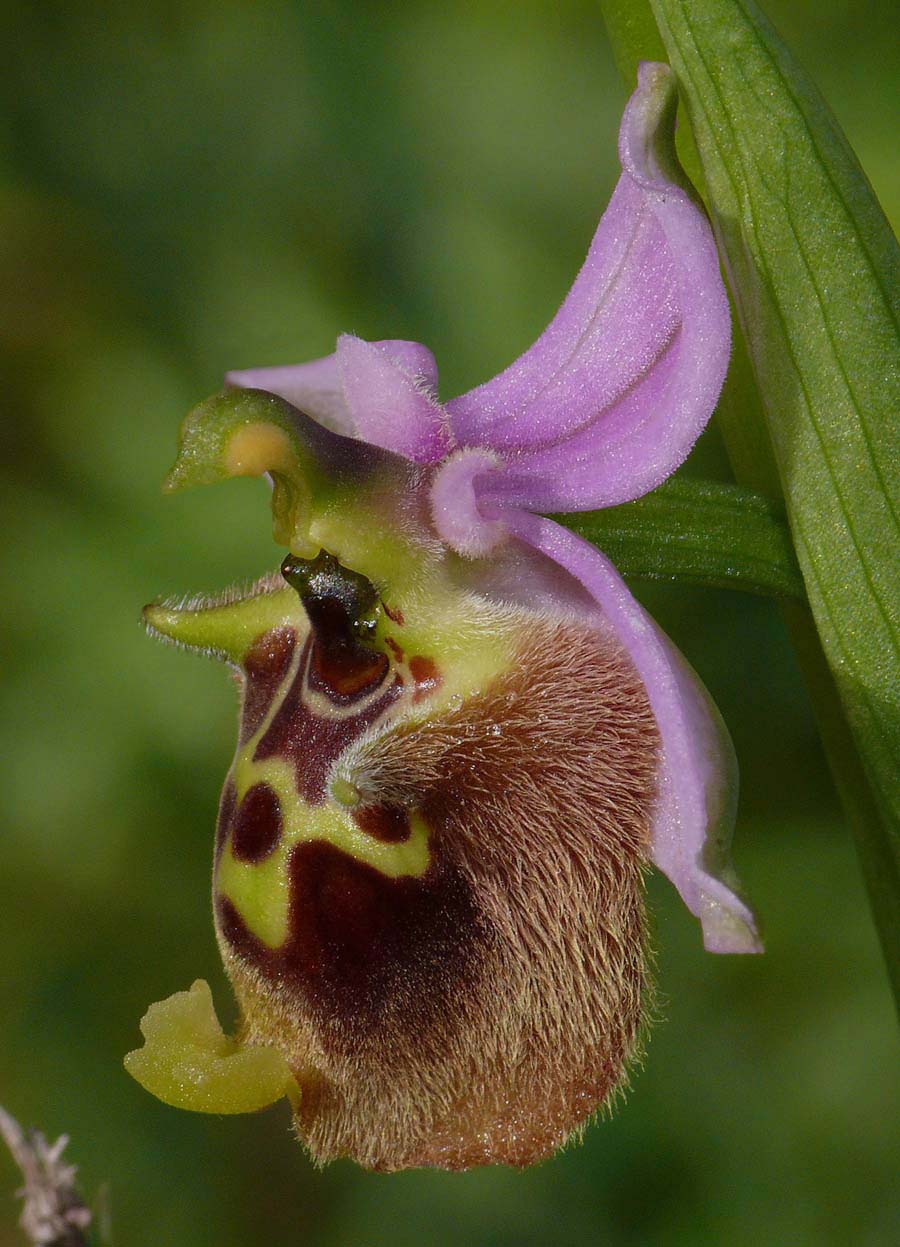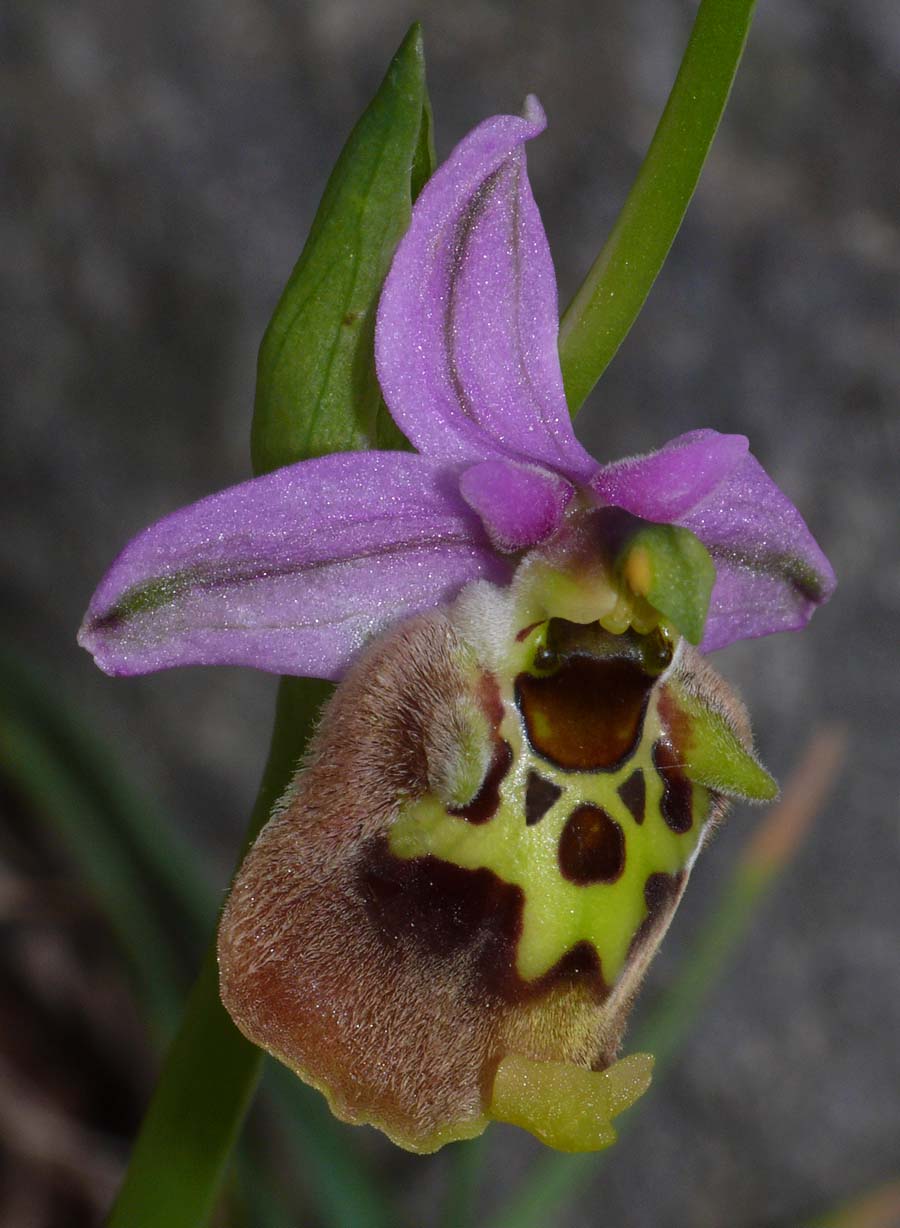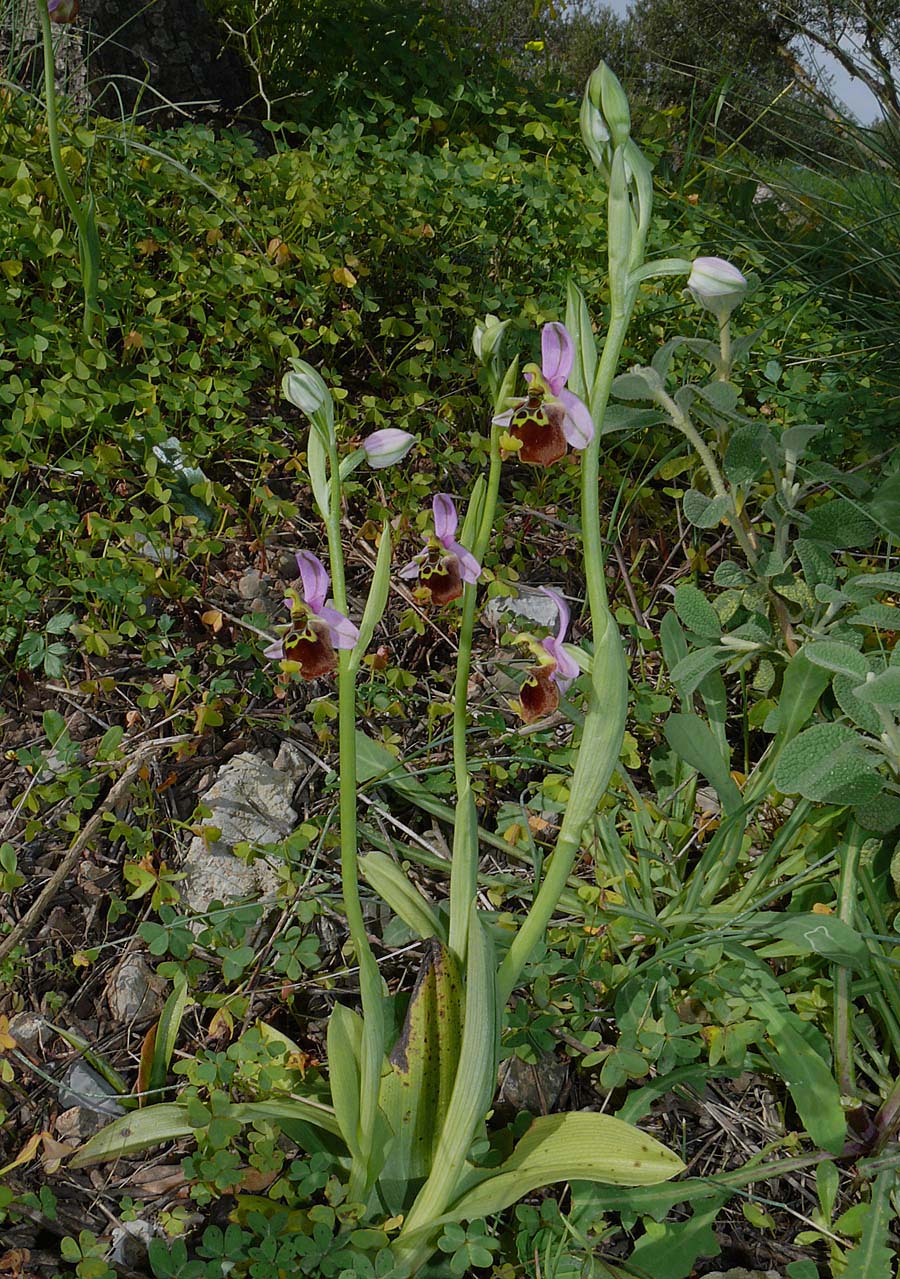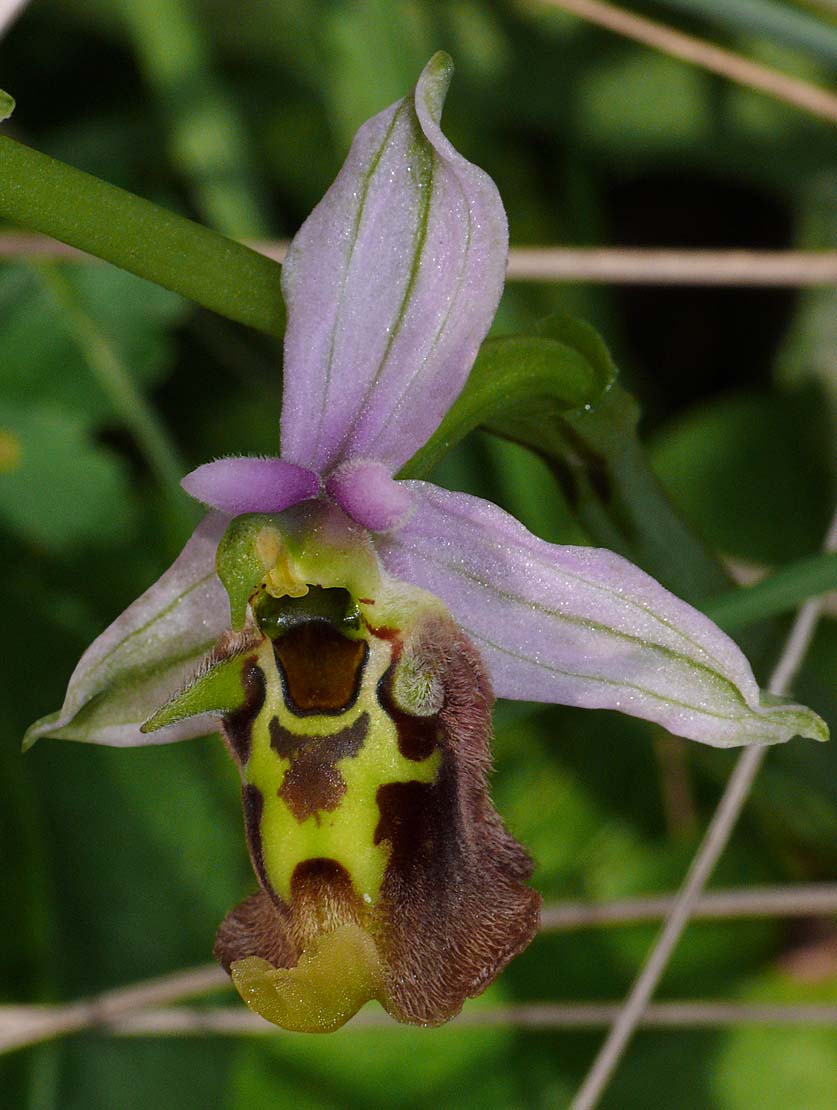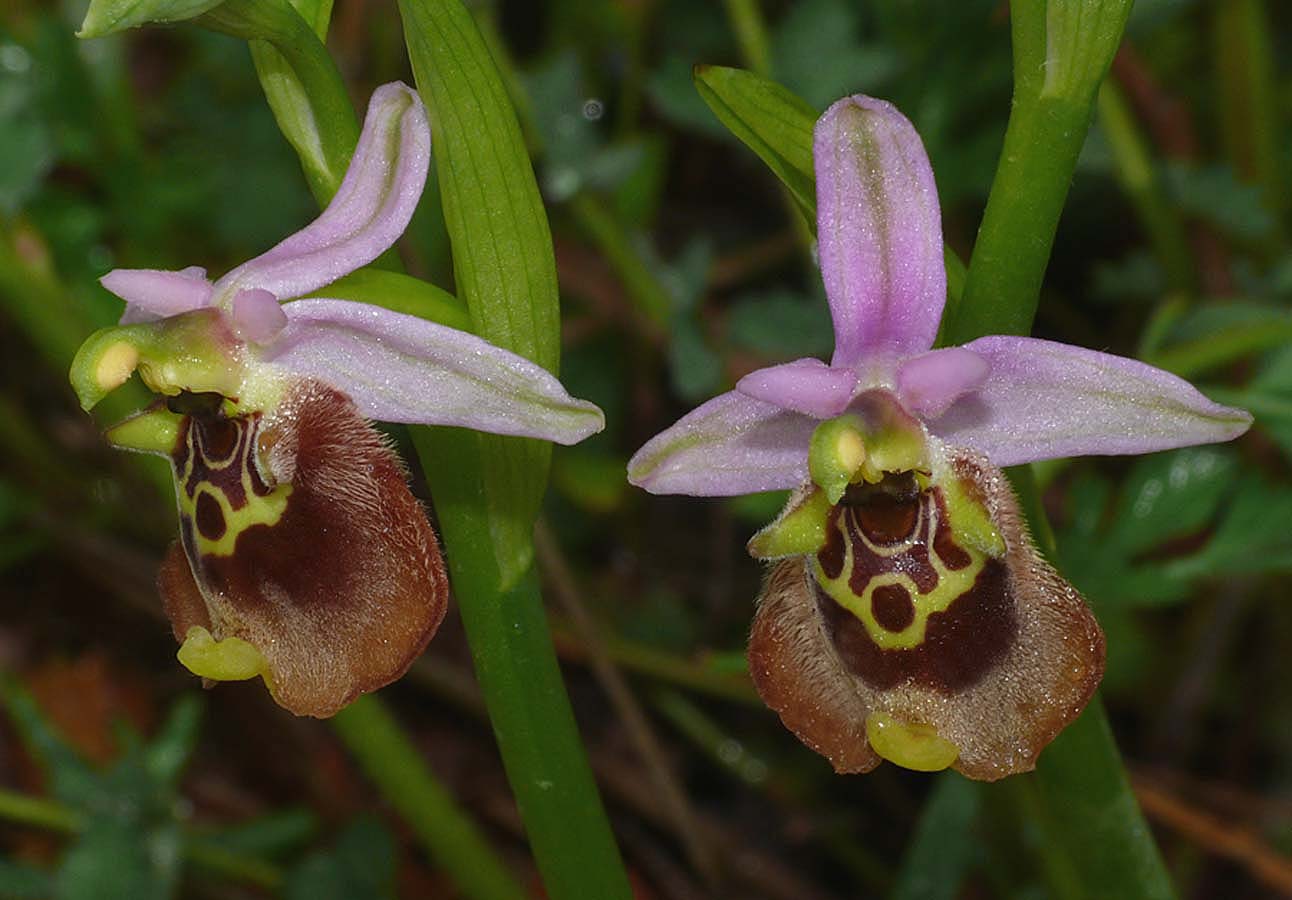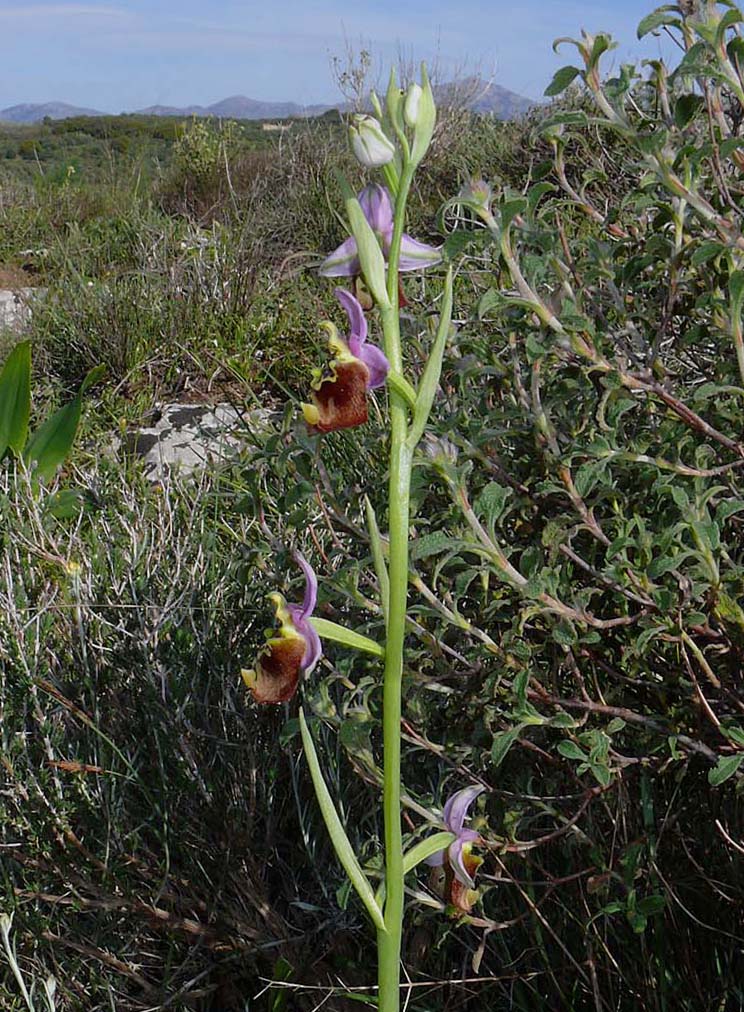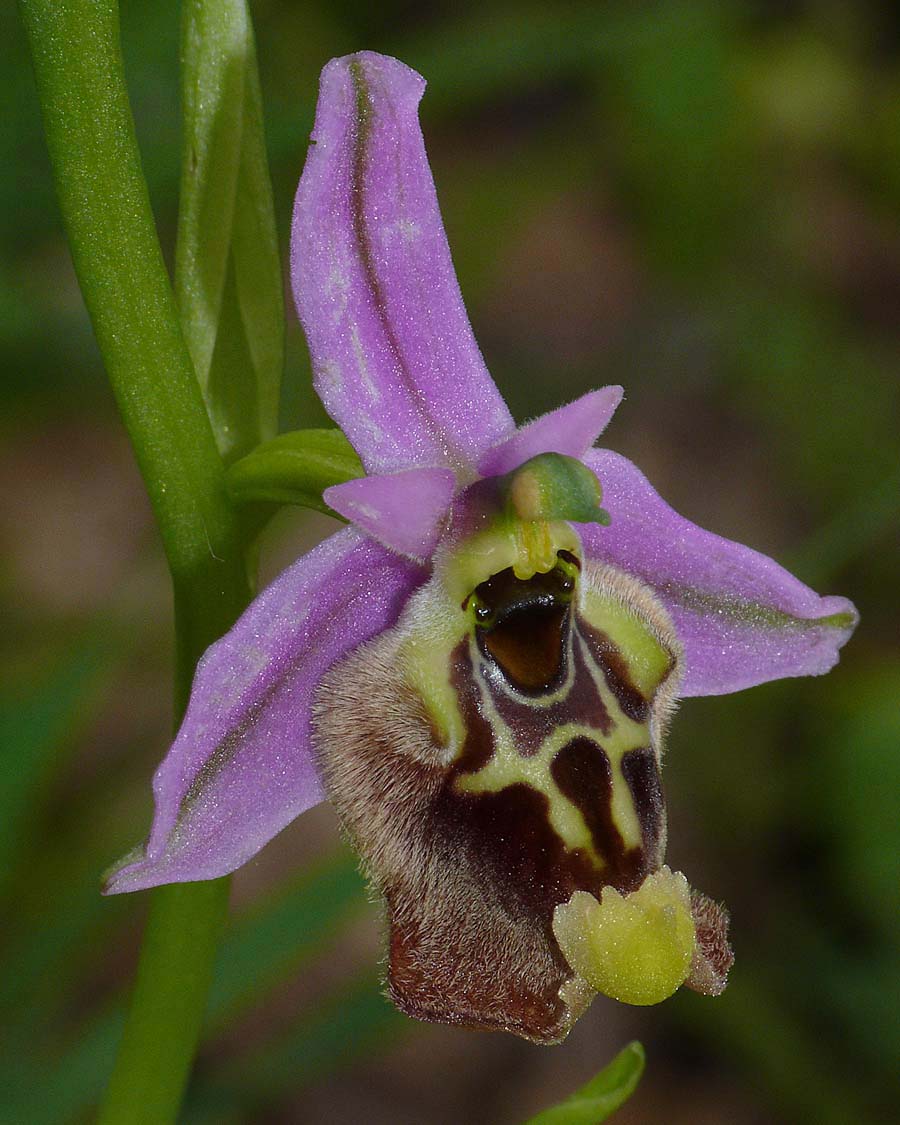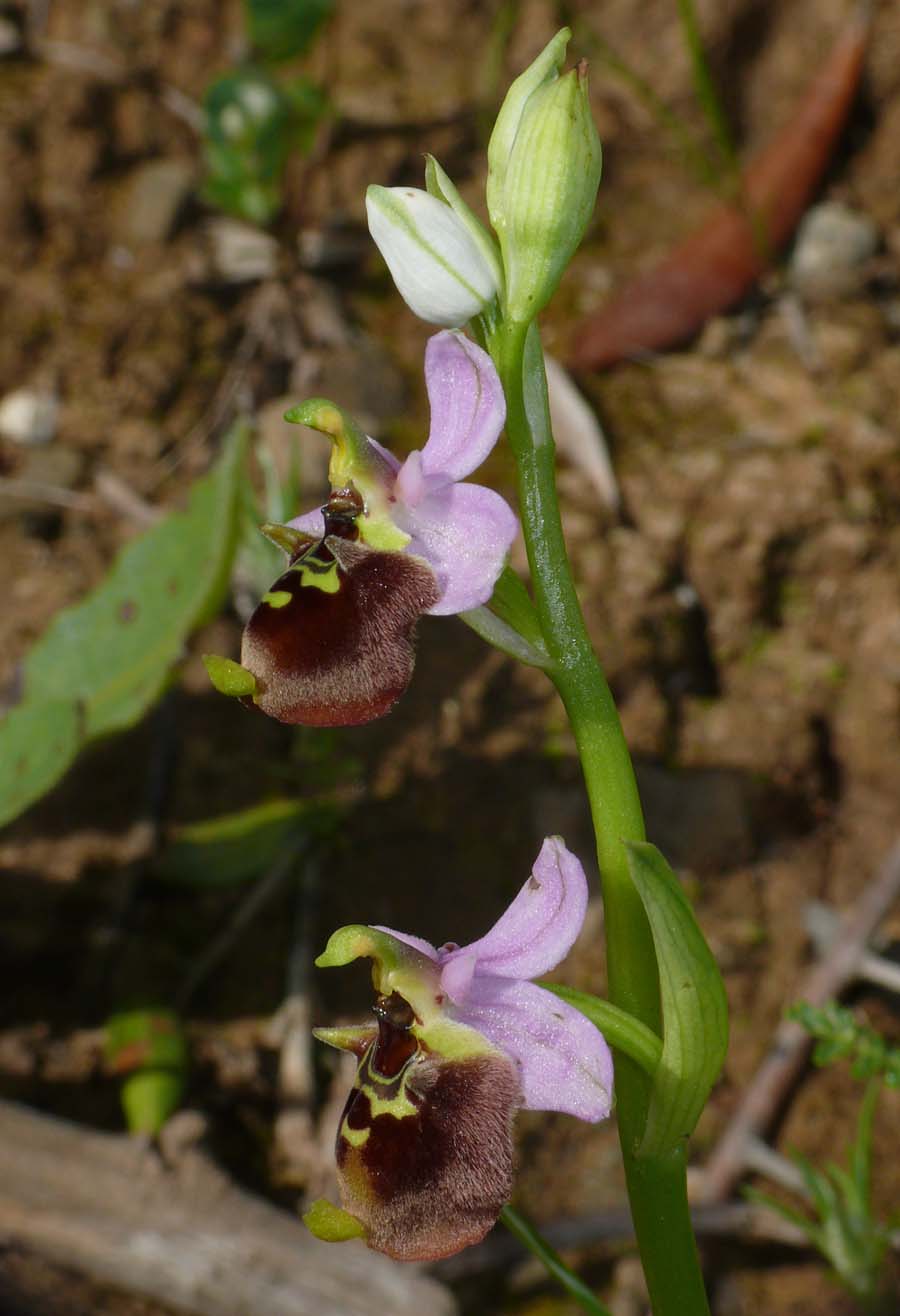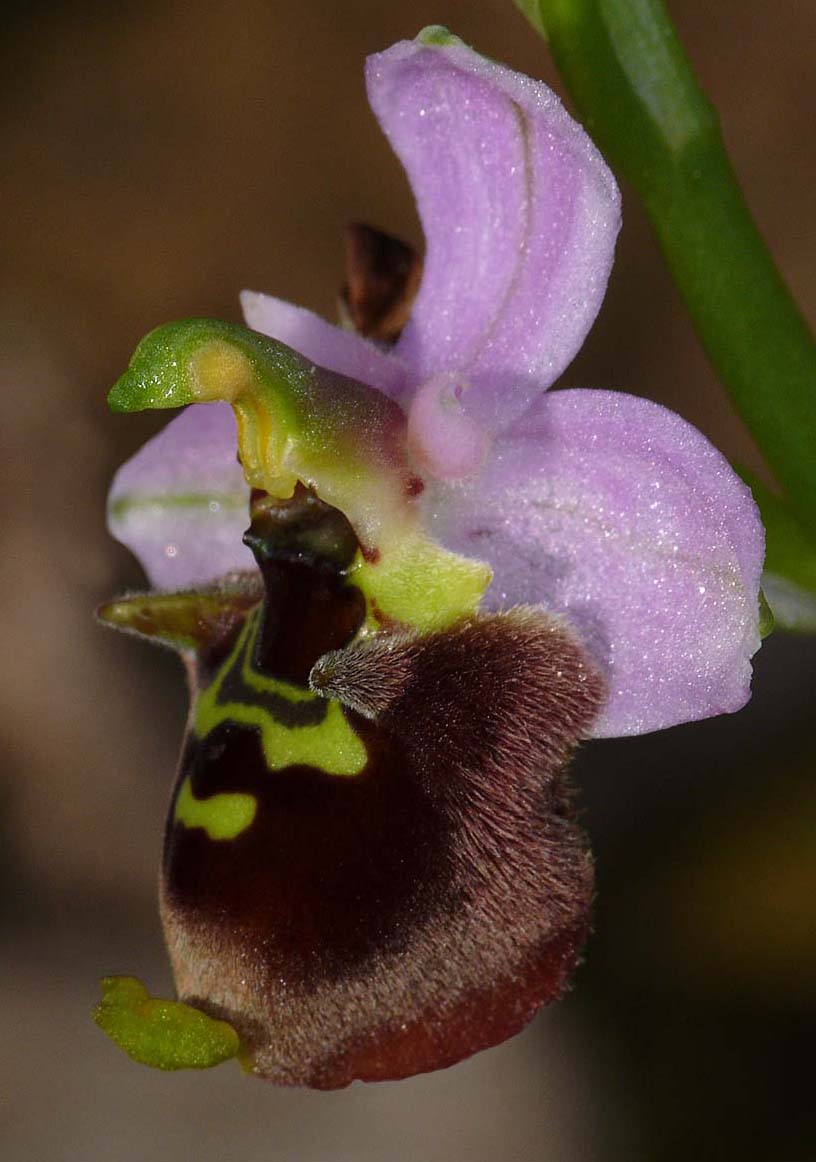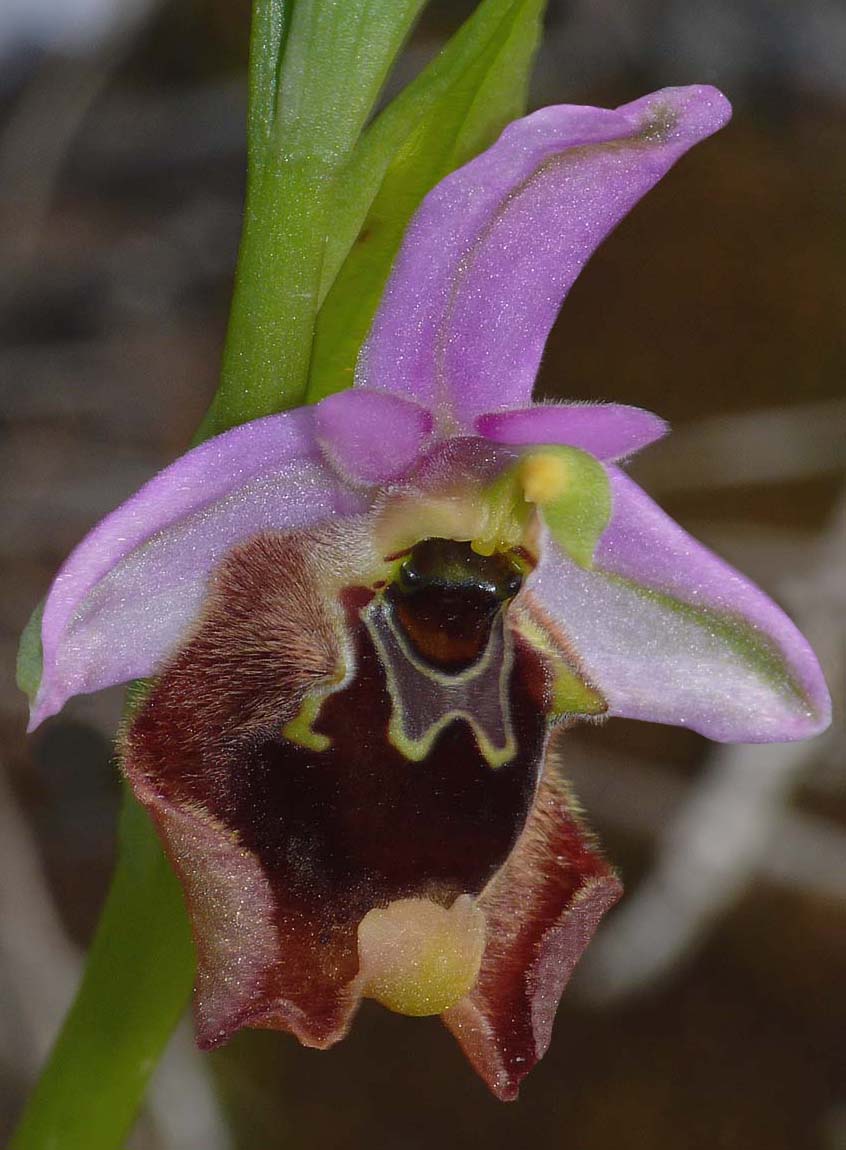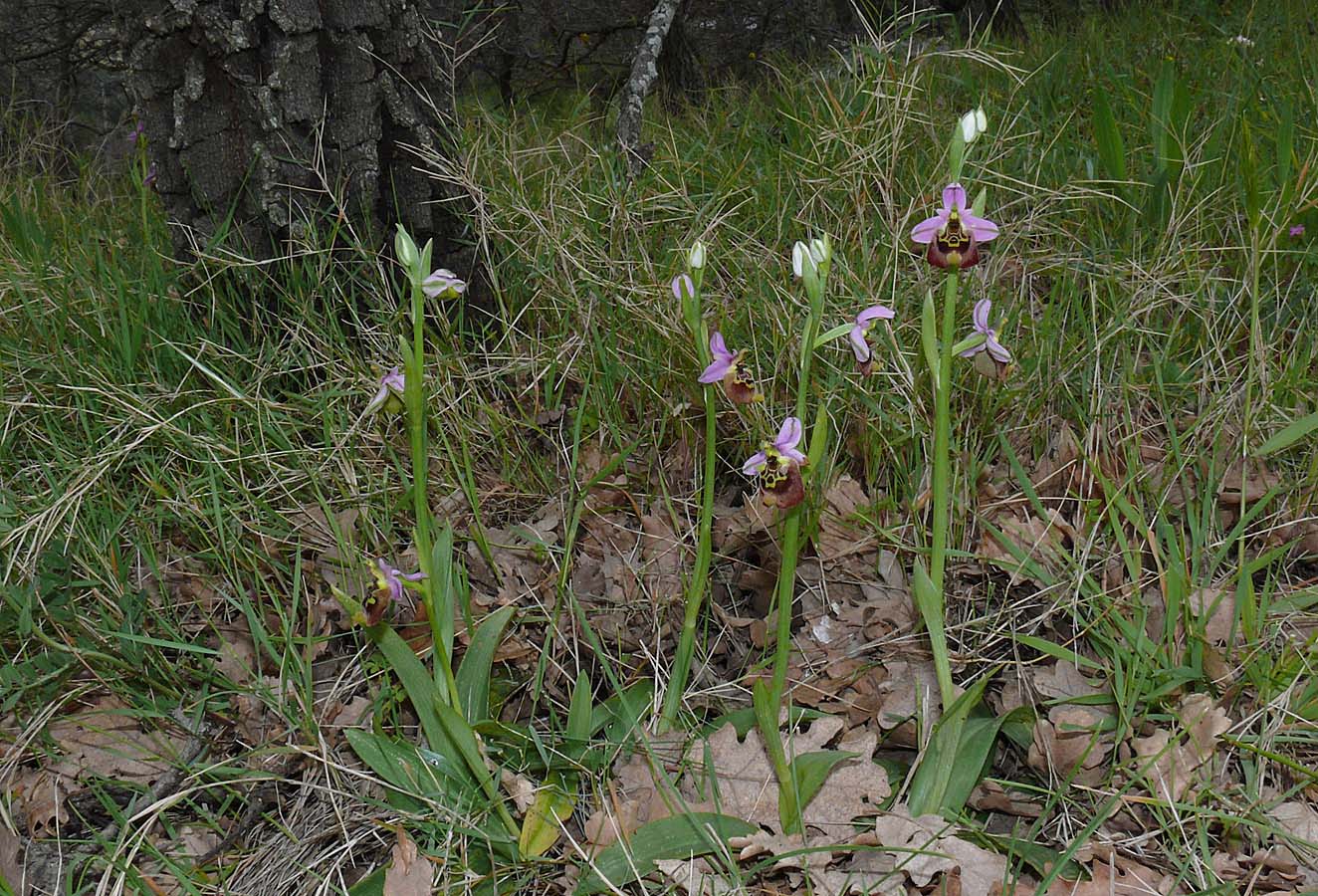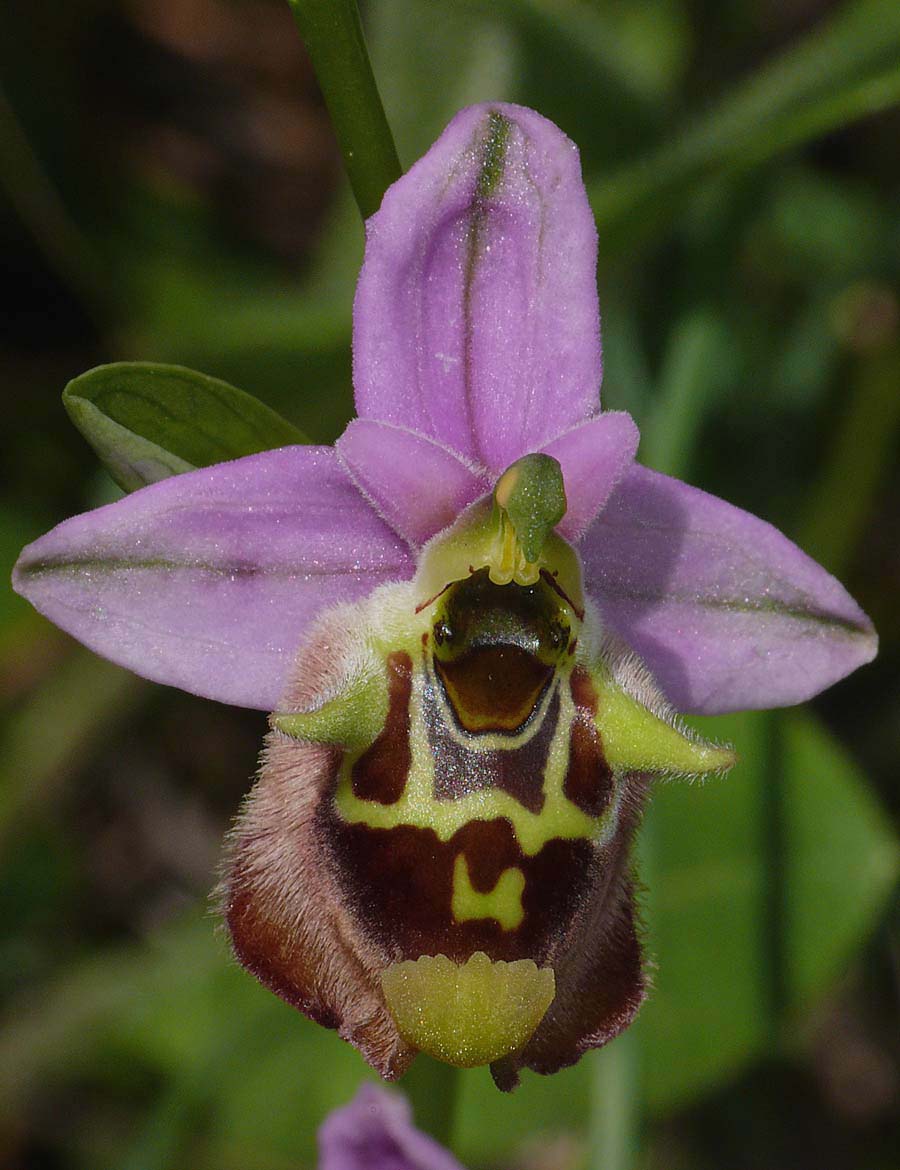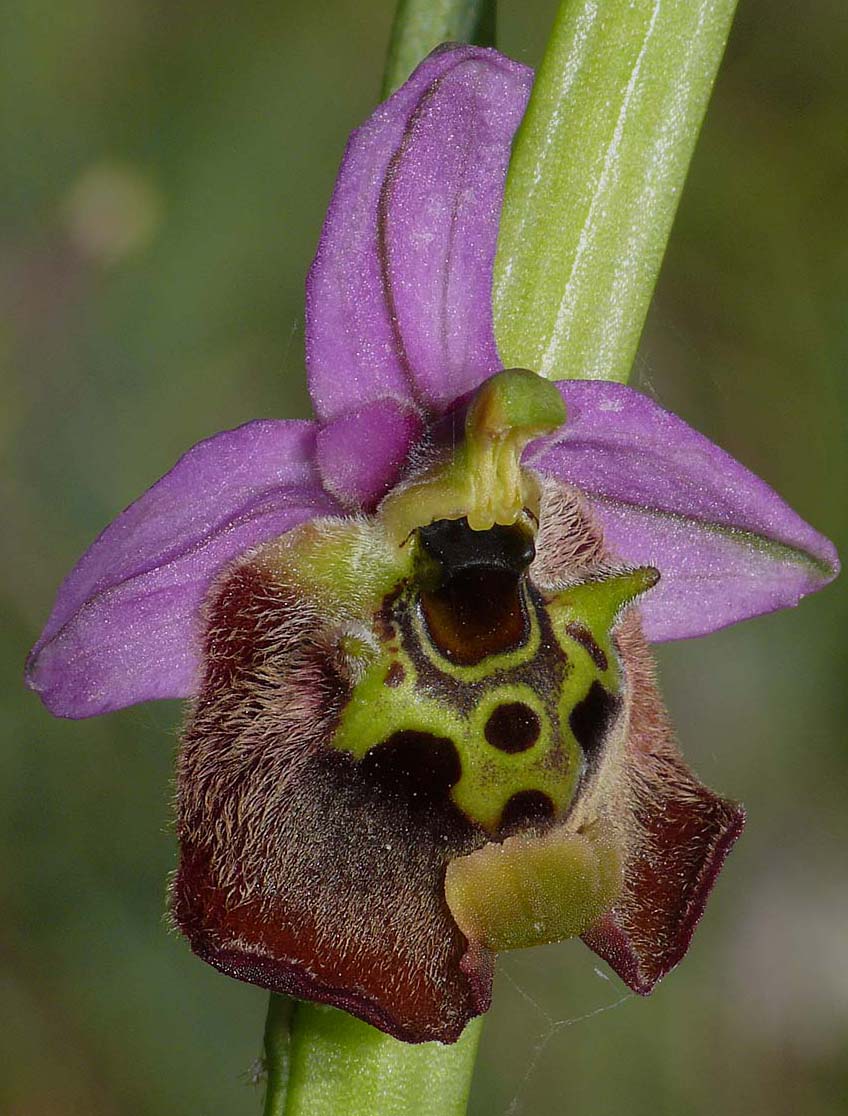O. episcopalis was first described from Crete by Poiret in 1816 and is a member of the widespread and largely Eastern Mediterranean based O. bornmuelleri group of Ophrys.
This is one of many Aegean species that have been the subject of study in recent years and although there is currently a reasonable degree of agreement amongst the experts, it seems highly likely that the definitive position has not yet been fully established and further splitting may follow. Up until the turn of the 20th century most authorities believed the O. bornmuelleri group on Crete was represented solely by O. episcopalis but that there were separate populations of an earlier flowering Ophrys that had become known as O. maxima (subsequently O. colossaea). Both these species were thought to occur elsewhere in the Aegean and particularly Rhodes. Research by Paulus and Hirth in 2009 however, confirmed that in fact the two species share the same pollinator and are in fact a single taxon. Given that the pollinator is endemic to Crete, it follows that the plants from other areas thought to be O. episcopalis and O. maxima are in fact separate species.
The principal source of confusion when identifying O. episcopalis is the presence on Crete of the very similar O. helios, first described by Kreutz in 2001. Although the latter species is a later flowerer, they may both be found in bloom concurrently during April. O. episcopalis does however have a larger flower and appears rather more narrow at the shoulders, with less widely separated basal swellings. Both species are variable and may appear in scolopaxoid form as well as the more usual trapezoid configuration. O. candica is also present on Crete (albeit rare) but this may be distinguished by the more extensive and less uniform speculum markings.
